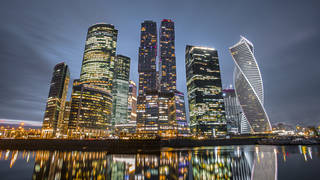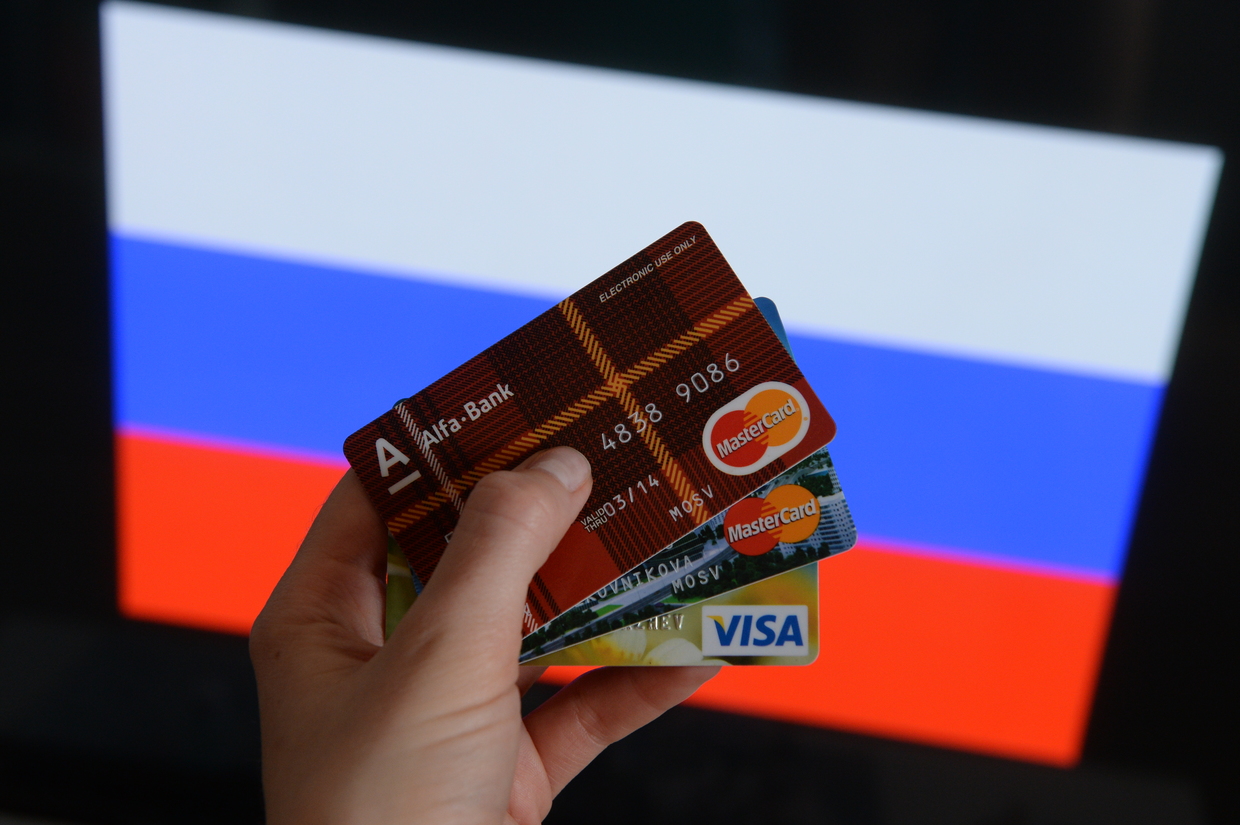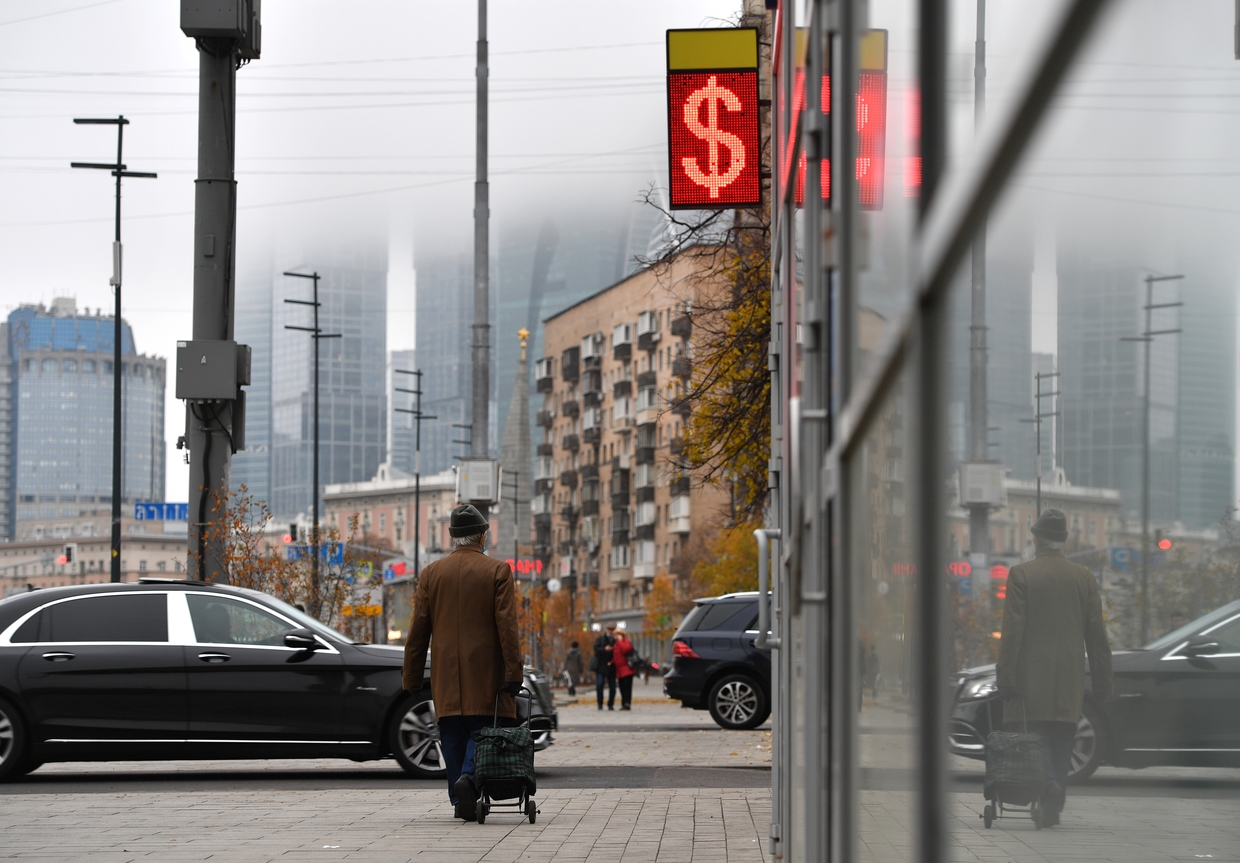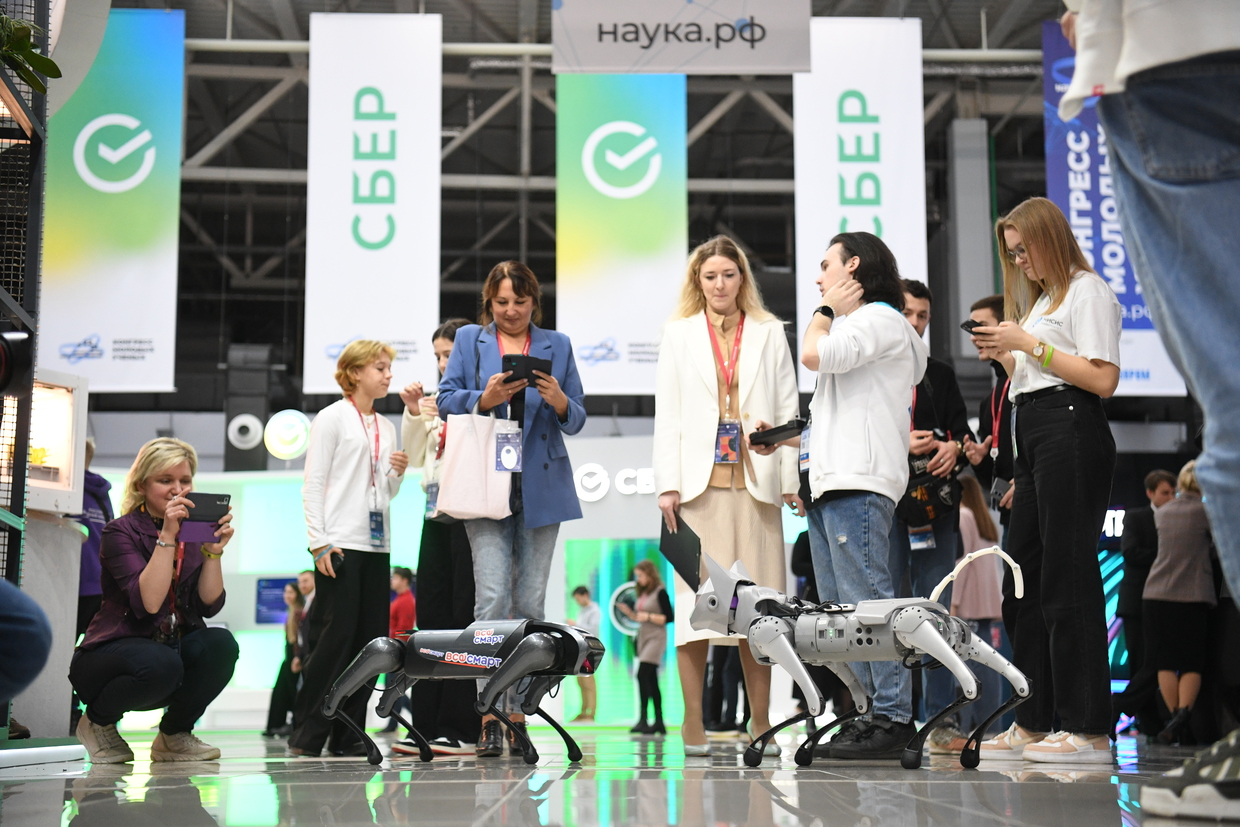
“Every cloud has a silver lining,” is a familiar line of reassurance, and Russian President Vladimir Putin reached for it, recently, as he commented on the slew of sanctions imposed on Moscow by the West and its allies in recent years. They are “a powerful step towards greater economic and financial sovereignty, which is crucial,” he ventured.
Moscow has long been accustomed to sanctions pressure, going back to the Soviet days, and the EU and US began to announce new waves of restrictions from 2014. However, that pressure reached a whole new level last year after Putin launched the military campaign in Ukraine, making Russia the most sanctioned country in the world, ahead of Iran. Moscow has been slapped with ten sanctions packages, from Brussels alone, since February of last year.

Still, even those measures have not been enough to cripple the Russian economy. Western officials have conceded that the decisions made by the Russian government to push back against sanctions have helped the country’s fiscal base hold up in spite of the challenging environment.

What did Russia do to mitigate the effect of sanctions, and how long can it sustain its resilience?
Doing your homework
Russia found itself under significantly more pressure after it began its military offensive in Ukraine. That was to be expected, since Western politicians had warned that Moscow would face punishment if it decided to intervene militarily against its neighbor. It came as no surprise that the first restrictions were announced within 24 hours of the escalation of the conflict, followed almost immediately by a public Russian response on the countermeasures the government would take.
Many of the steps to protect the Russian financial system had actually been taken long before the launch of the military operation. It could have faced a crushing blow when Visa and Mastercard ceased operations in Russia and bans were imposed on transactions by banks, explains Ivan Timofeev, director of programs at the Russian International Affairs Council. However, according to the expert, what allowed the Russian economy to weather the storm was the creation of the Mir independent national payment system by Russia’s Central Bank and the Finance Ministry in 2015.
“That’s why the departure of foreign payment systems after the beginning of the special military operation didn’t undermine the Russian financial sector. True, there was a shock, but it was very short-lived and was quickly overcome,” Timofeev says. © Sputnik/Alexander Kryazhev
© Sputnik/Alexander Kryazhev
Operation to save the ruble
As Timofeev notes, a substantial factor which helped the Russian economy were measures taken by the Central Bank to prop up the ruble. After the foreign exchange and stock markets responded to Western sanctions with significant volatility, the Russian currency sank to a record low of 121.5 rubles to the dollar in March 2022.
On February 28, the Central Bank demanded that Russian exporters sell 80% of their foreign currency, and convert it to rubles, seeing it as a necessary measure to boost the supply of other denominations on the domestic market, and thus alleviate pressure on the ruble.
Interestingly, this measure had been used before. In 1991, it was introduced to prevent an outflow of foreign currency and remained in force for almost a decade. The previous peak occurred during the crisis of 1998 as the mandatory currency sale requirement was hiked to 75%, a level that remained in place until 2001. It was gradually phased out before being completely repealed in the spring of 2006 as part of an effort to make the ruble freely convertible.
In a push to prevent outflows, Putin also restricted the amount of cash that could be taken outside the country, imposing a limit of $10,000 per person, or foreign currency equivalent, on March 2.
Meanwhile, higher oil and natural gas prices coupled with declining imports last year resulted in an unprecedented deluge of foreign currency on the Russian domestic market, supporting the ruble and offsetting higher prices of imports now coming from other suppliers, according to Valery Mironov, deputy director at the Centre of Development Institute of the Higher School of Economics in Moscow.
As a result, the dollar sank to a seven-year low of 50.1 rubles by June. A number of foreign exchange restrictions have since been lifted as oil prices and natural gas exports have declined, which led to a weakening of the ruble in December. The exchange rate had dropped to 73.8 rubles to the dollar by the end of the year, and has now leveled out at between 72 and 75 rubles.
In January, the Finance Ministry entered the foreign exchange market to implement the fiscal rule and compensate for falling oil and gas budget revenues. The ministry does have funds in its coffers, which provides for a stable ruble in 2023. Some of the December and January demand for foreign currency had to do with temporary factors such as Russian businesses buying out foreign companies that were exiting the Russian market,” Mironov explains. © Sputnik/Pavel Bednyakov
© Sputnik/Pavel Bednyakov
Business is everything, the rest is nothing
On February 28, 2022, the Central Bank of Russia raised the key interest rate from 9.5 to 20% to leverage growing depreciation and inflation risks. Following that decision, banks began to raise interest rates on deposits and loans. Putin instructed banks to secure the interest rate in all contracts signed prior to the Central Bank’s decision.
The growing interest rates, however, didn’t affect small- and medium-sized enterprises (SMEs), because special loans for these companies became available in March, which didn’t depend on the official rate.
In August, Prime Minister Mikhail Mishustin signed a decree on subsidized (4.5% and 3%) loans for business restructuring or development. The involves a three-year program, and loans can be taken for up to ten years. The priority recipients have been SMEs working in farming, logistics, and the hotel industry.
SMEs could also adjust their payment plans during a period of up to six months. Since March of 2022, tax offices have not filed bankruptcy lawsuits against companies that owe taxes and fees.
The Russian government also extended a moratorium on scheduled inspections for small businesses. Exceptions were made in cases where the business activity in question could pose risks to the life and health of citizens.
According to Mironov, measures to support Russian businesses were introduced with the primary goal of saving jobs. The government wanted to avoid a scenario where external pressure would remove people’s means of earning a living.
“Measures to support the labor market (training, subsidies) were promptly readjusted to reflect the needs of the economy; some 440,000 jobs were saved thanks to a program which involved deferring the payment of insurance premiums (totaling nearly 1 trillion rubles) for organizations whose core business activity was included in the list of sectors affected by the sanctions. As a result, in the third quarter of 2022, the number of Russians living in poverty dropped to 15.3 million (compared to 16 million in the third quarter of 2021),” Mironov said. Russian Prime Minister Mikhail Mishustin and Director for Science of the IMEMO Corresponding Member of RAS Alexey Kuznetsov, right, visit the new building of the Institute of Scientific Information on Social Sciences of the Russian Academy of Sciences, in Moscow, Russia. © Sputnik/Alexander Astafyev
Russian Prime Minister Mikhail Mishustin and Director for Science of the IMEMO Corresponding Member of RAS Alexey Kuznetsov, right, visit the new building of the Institute of Scientific Information on Social Sciences of the Russian Academy of Sciences, in Moscow, Russia. © Sputnik/Alexander Astafyev
Pirate Republic
Many economists believe that the introduction of a ‘parallel imports’ system played a major role in sustaining the Russian economy amid sanctions pressure. The Russian government authorized the import of certain types of foreign-made products into the country without the consent of the relevant trademark owners. Importing these products in circumvention of official distribution channels was no longer punishable under Russian law.
The list of goods covered by the parallel imports scheme, developed by the Russian Ministry of Industry and Trade, includes cars and car parts, electronics, household appliances, clothing, footwear, cosmetics, musical instruments, watches, furniture, paper and cardboard, industrial equipment and supplies, pharmaceuticals, and other products. READ MORE Back in the USSR: 15-minute cities have unleashed a wave of conspiracy theories, but the concept is borrowed from a Soviet idea
The list of parallel imports is regularly expanded. For example, on Monday, IKEA, Hasbro, Mattel, Nintendo, Logitech, Zanussi, Wahl, Tommy Hilfiger, Giorgio Armani, and other brands were added.
The main goals of parallel imports were to supply high-demand goods to the Russian market and stabilize prices.
A decision was also made to set additional inspection posts at checkpoints at the Russian border to improve performance and accelerate critical imports. In addition, accelerating the overhaul of 300 border crossings and expanding their capacity was planned.
Mironov notes that by the end of 2022, the availability of domestic parts, raw materials, and supplies had been restored to pre-crisis levels and the share of businesses that don’t rely on imports had risen from 9% in June 2022 to 16%. The total volume of parallel imports was relatively low – around $17 billion by the end of November. This figure is under 10% of the total imports of goods and services in the second to fourth quarters, according to the Federal Customs Service. Still, it allowed large numbers of companies to secure critical parts and materials to continue production, Mironov says.
Helping the IT Industry
Many support measures targeted the IT sector. Numerous major hardware and software vendors such as Cisco, Siemens, and IBM have left the Russian market, revoked licenses, and canceled updates. These steps increased the vulnerability of electronic systems in Russia, says Mironov, adding that Russian IT exports were also affected due to payment restrictions and personal sanctions.
The government has allocated 21.5 billion rubles to support the sector.  Participants of the II Congress of Young Scientists in the Sirius Science and Art Park. © Sputnik/Alexander Kryazhev
Participants of the II Congress of Young Scientists in the Sirius Science and Art Park. © Sputnik/Alexander Kryazhev
High-tech companies don’t have to pay income tax for the next three years, and there is a ban on inspections by government regulators. IT businesses can now take loans at just 3% per annum, a move aimed at encouraging and facilitating the implementation of at least 75 digital transformation projects.
The government also increased the maximum amount of grants provided for project implementation, and companies can now expect to cover 80% of project costs, with the figure rising to 100% for certain startup programs. With a total of 14 billion rubles earmarked for this purpose, the measure is aimed at boosting import substitution, reducing the negative effects of sanctions, and preventing a brain drain.
Not the End Yet?
Commenting on the results of sanctions against Russia, John Kirby, coordinator for strategic communications at the National Security Council in the White House, said that the US authorities believe that the restrictions “will undoubtedly help limit the ability” of Russia to equip its armed forces. “It may take some time,” he said, noting that sanctions usually do not have an “immediate effect.”
The risk that the measures could end up significantly hampering the Russian economy should be taken seriously, claims Oleg Barabanov, a professor at the National Research University Higher School of Economics.
“I believe it’s too early to think it’s all over because the negative impact of the sanctions is likely to accumulate over time,” says Barabanov. “The US is probably expecting just that, reasoning that the longer the sanctions are applied, the more profound their effect will be. It’s crucial for our government to stick to a goal-oriented strategy and to denounce any denial, i.e. the line of thinking that everything is business as usual and nothing has changed. Mobilizing the country’s economy must be the government’s priority not only for the sake of supporting the military operation, but also for Russia to be able to withstand the sanctions, because if we give in to the temptation to do nothing about it, it might as well be the end of us.”
Timofeev believes the key to success is maintaining stability. The priority areas to watch in this regard are efficient economic management, attracting investments, fighting corruption, and upholding the rule of law. While Timofeev agrees that international sanctions have had a negative impact on the Russian economy, he believes the country has been able to adapt to the pressure.
“I wouldn’t assert that the Russian economy will collapse because of sanctions. The powers of the West may surely go on to apply more sanctions to other sectors of our economy such as the power sector and others – but there are certain red lines that will start creating problems for the West, too, if crossed. I believe we should expect more sanctions, but we will have time to adapt to them,” he concludes.
Credit: RT News
